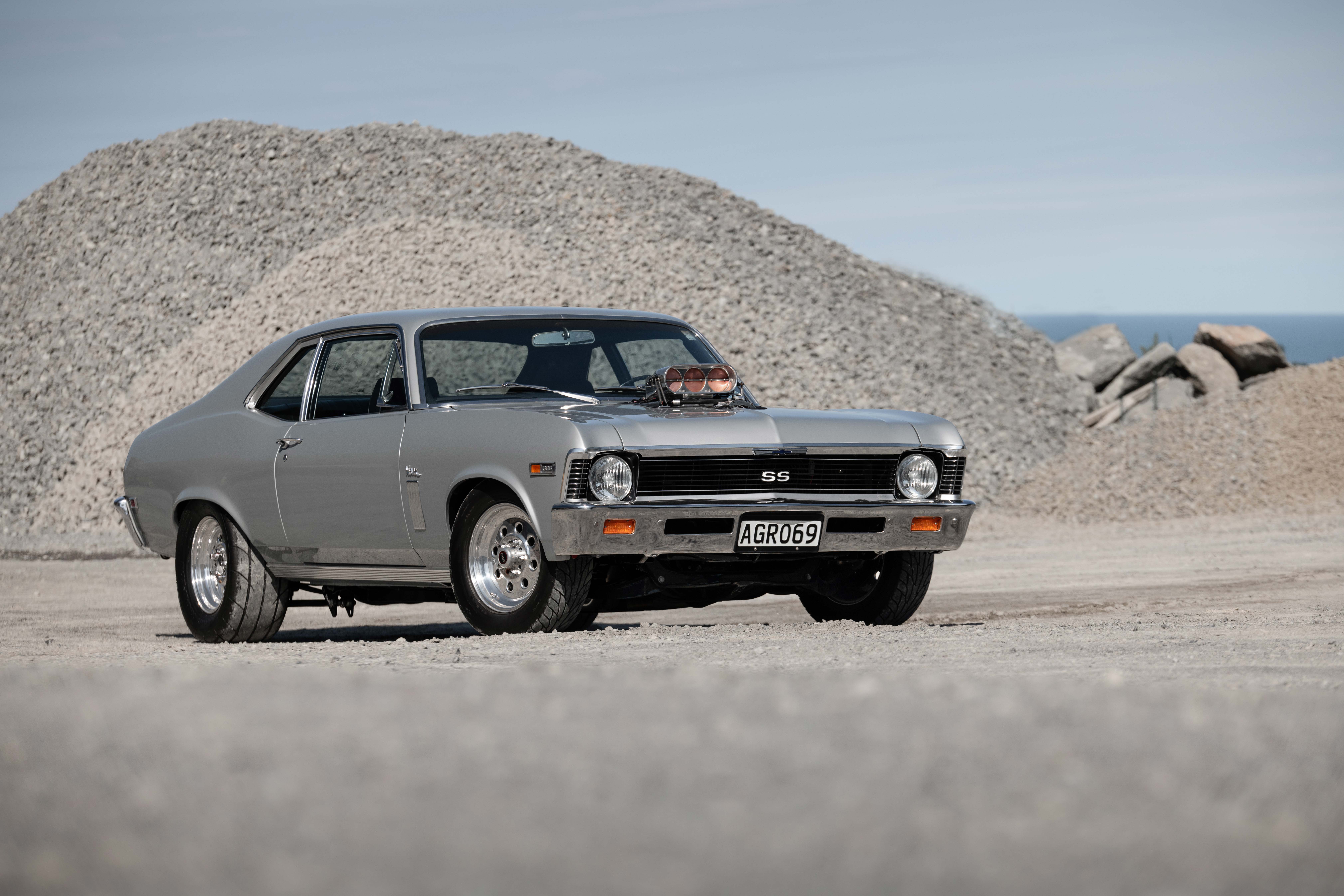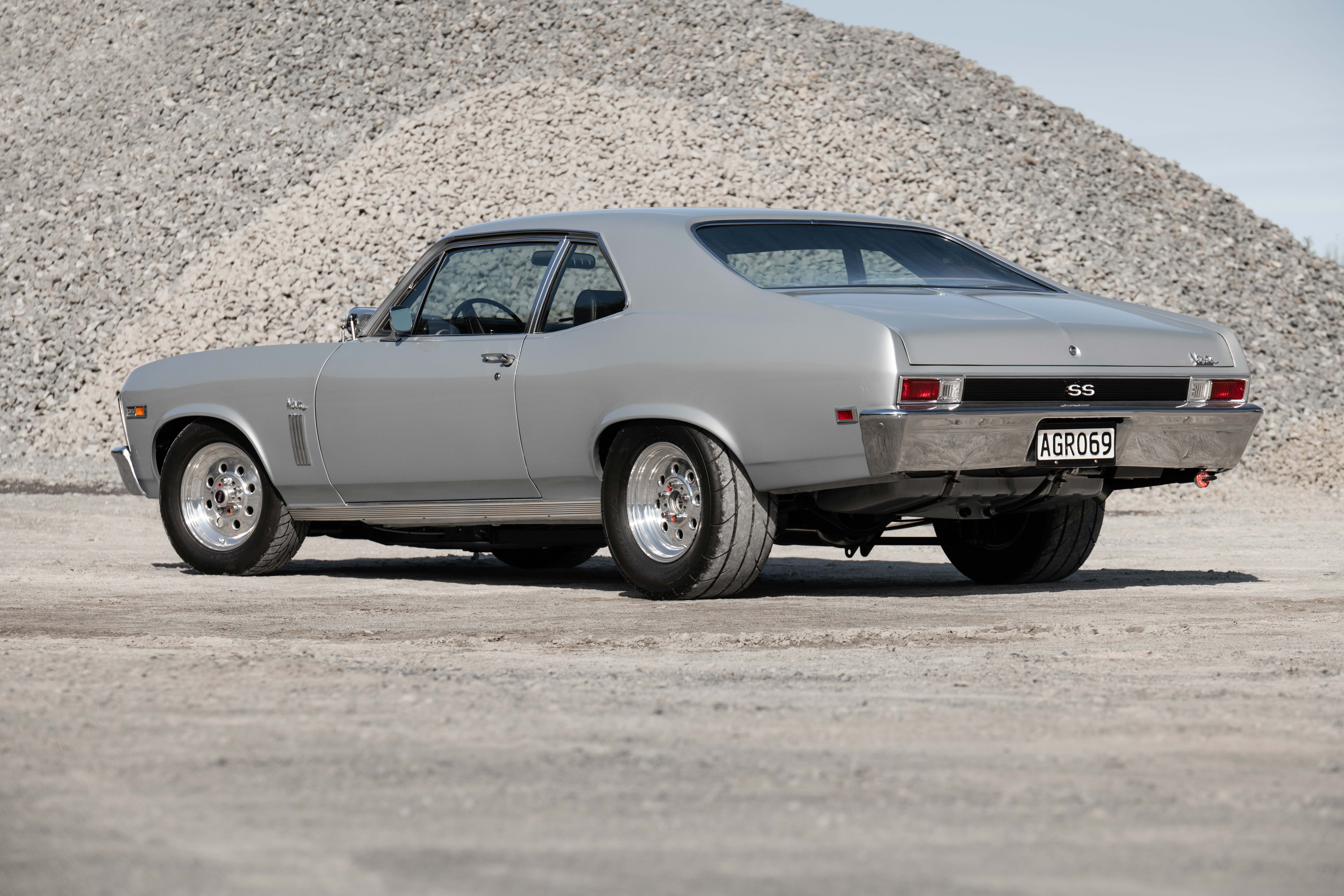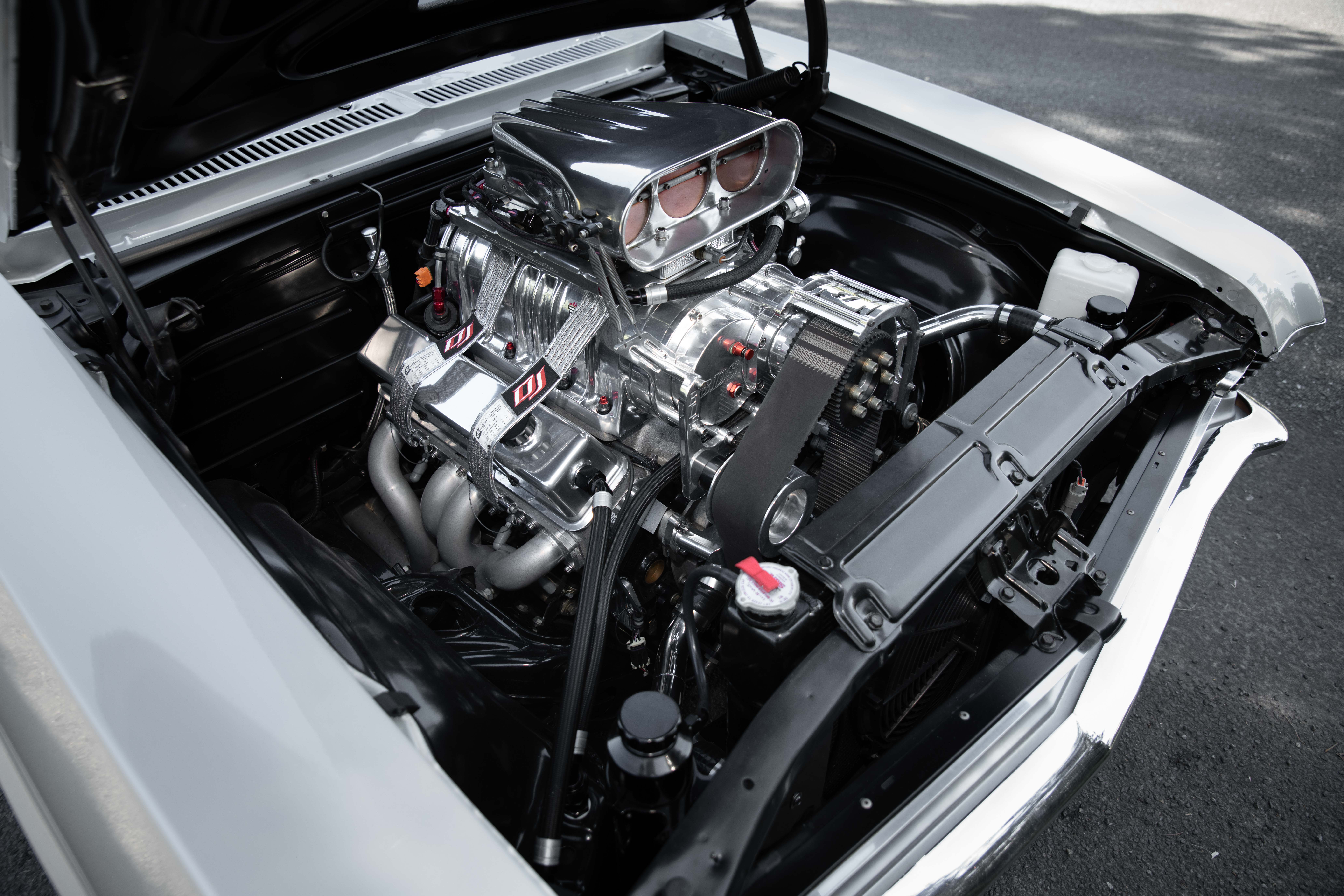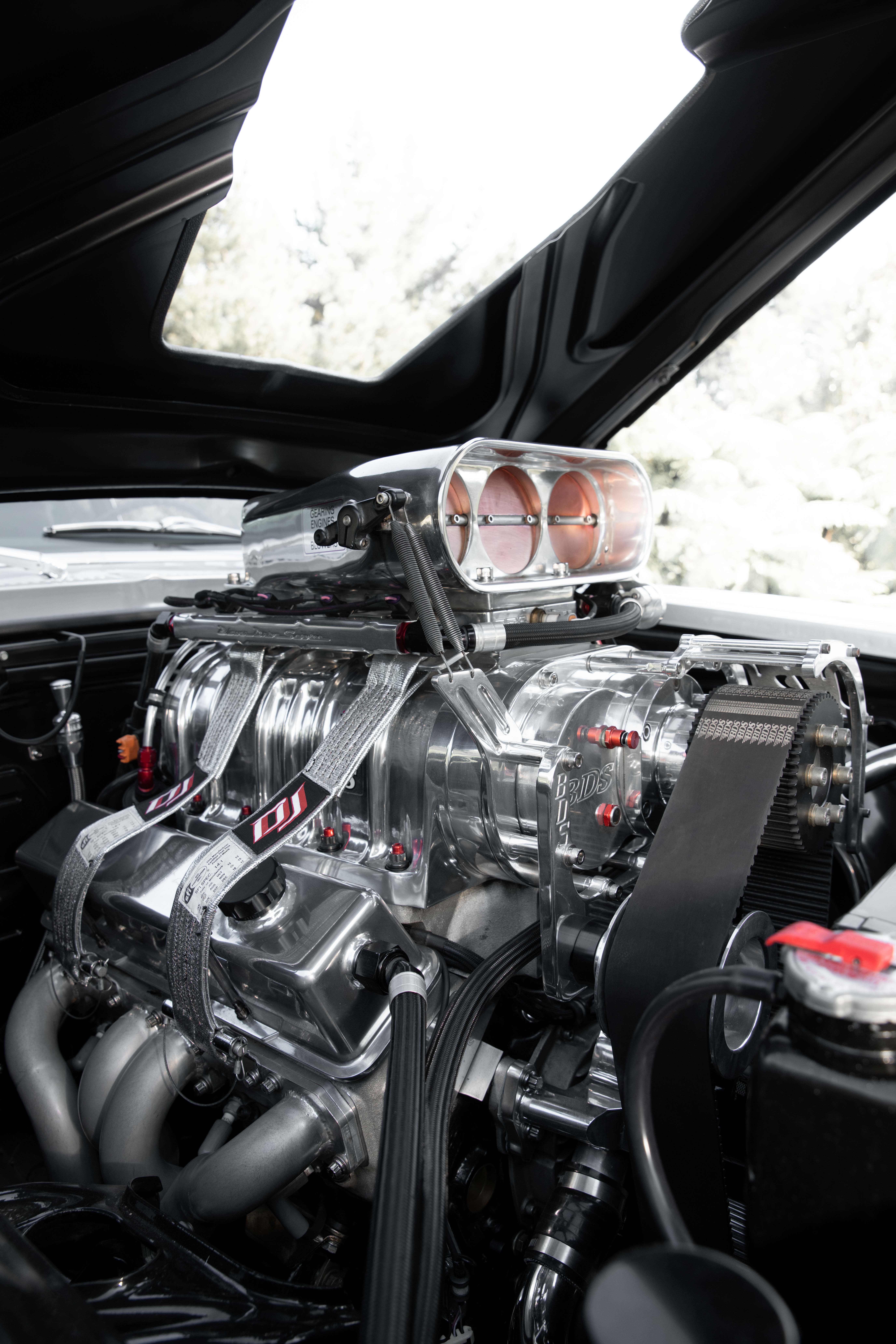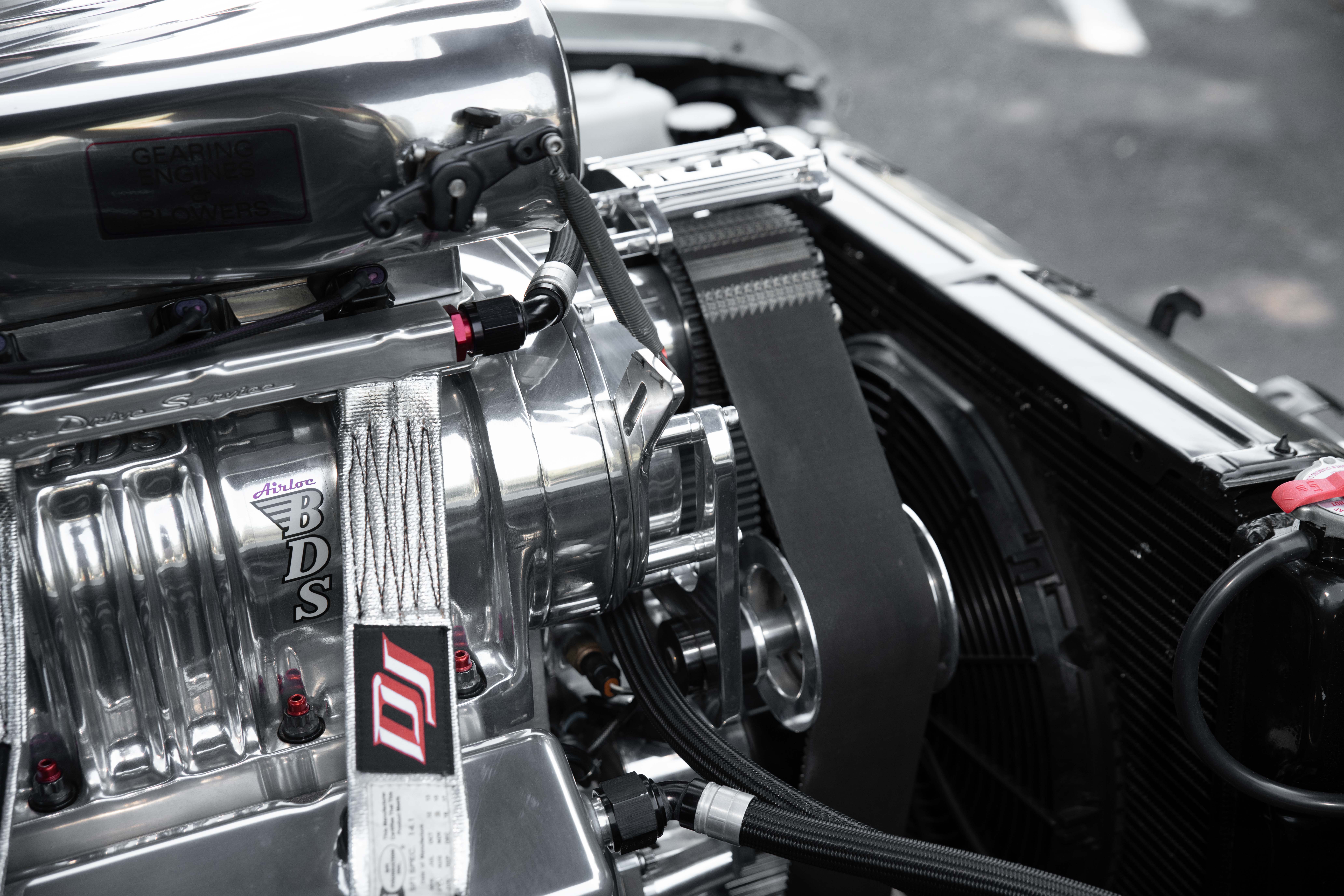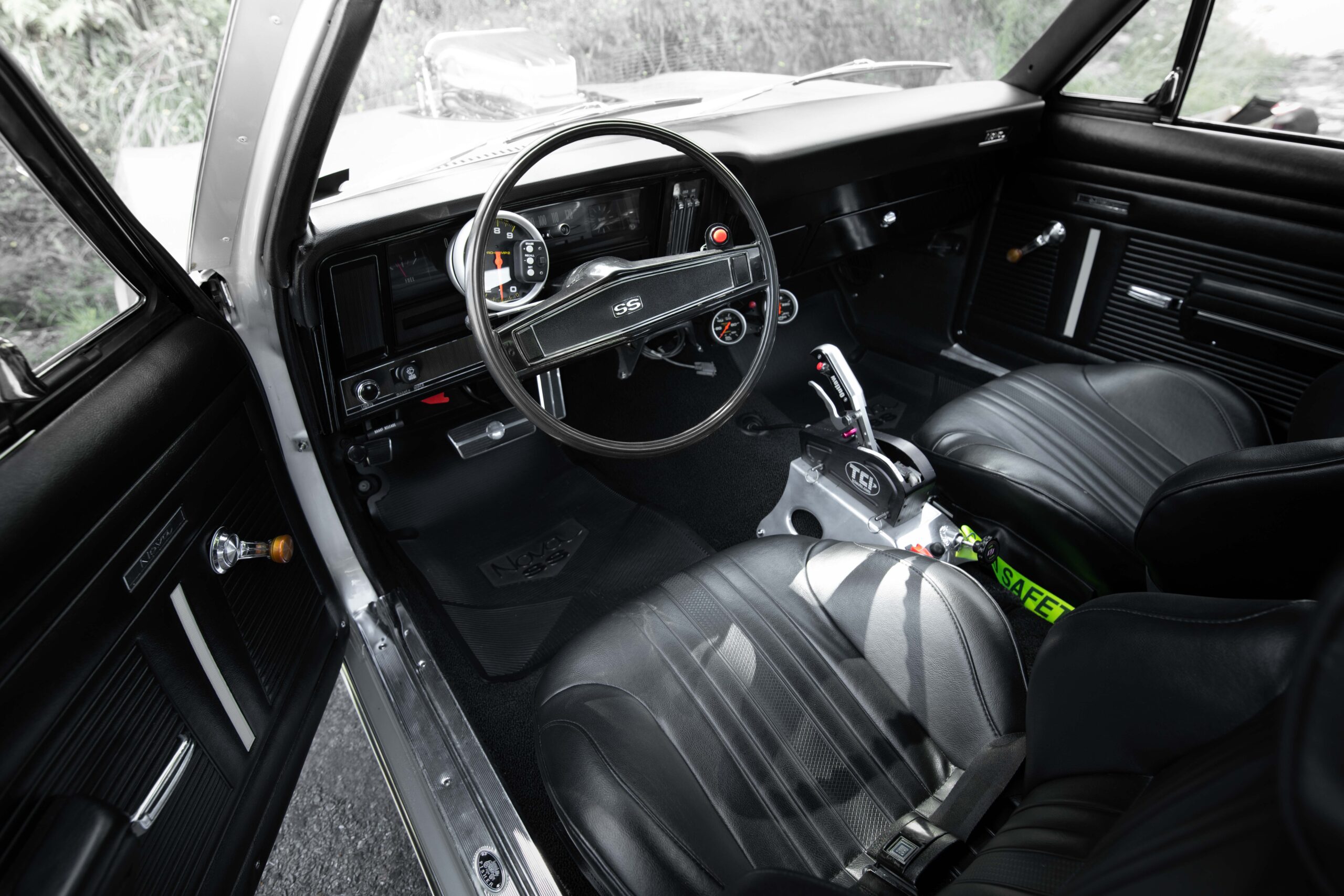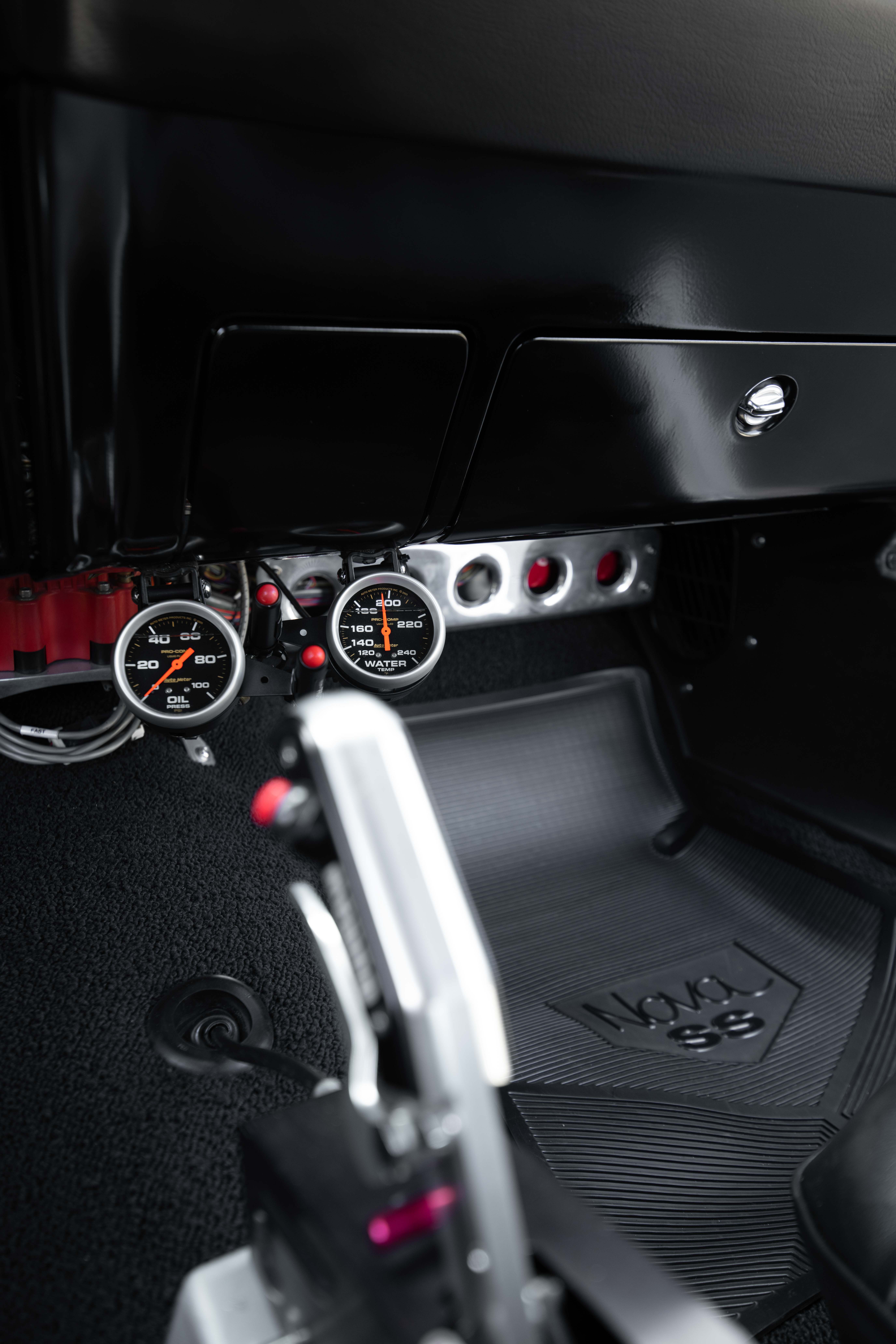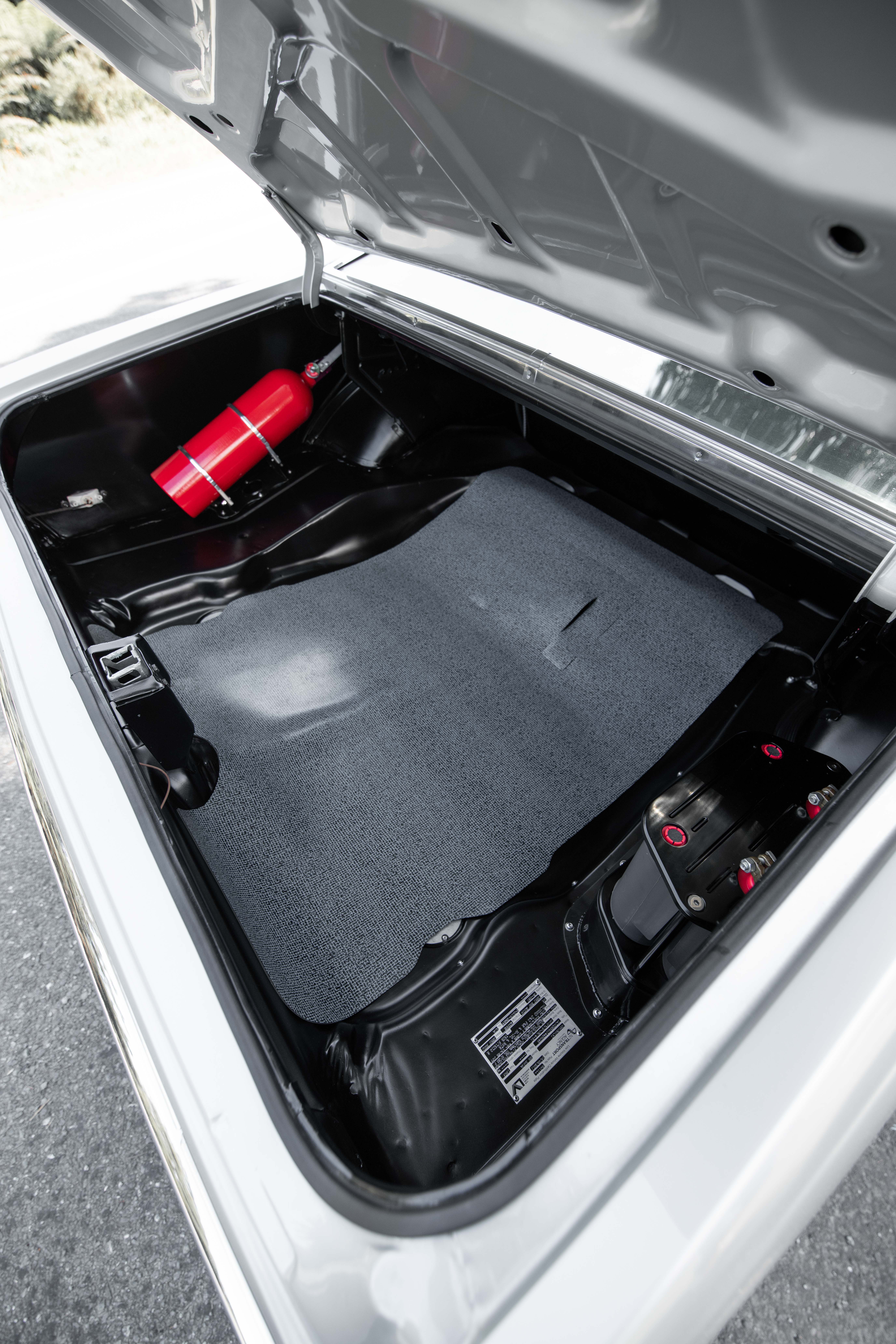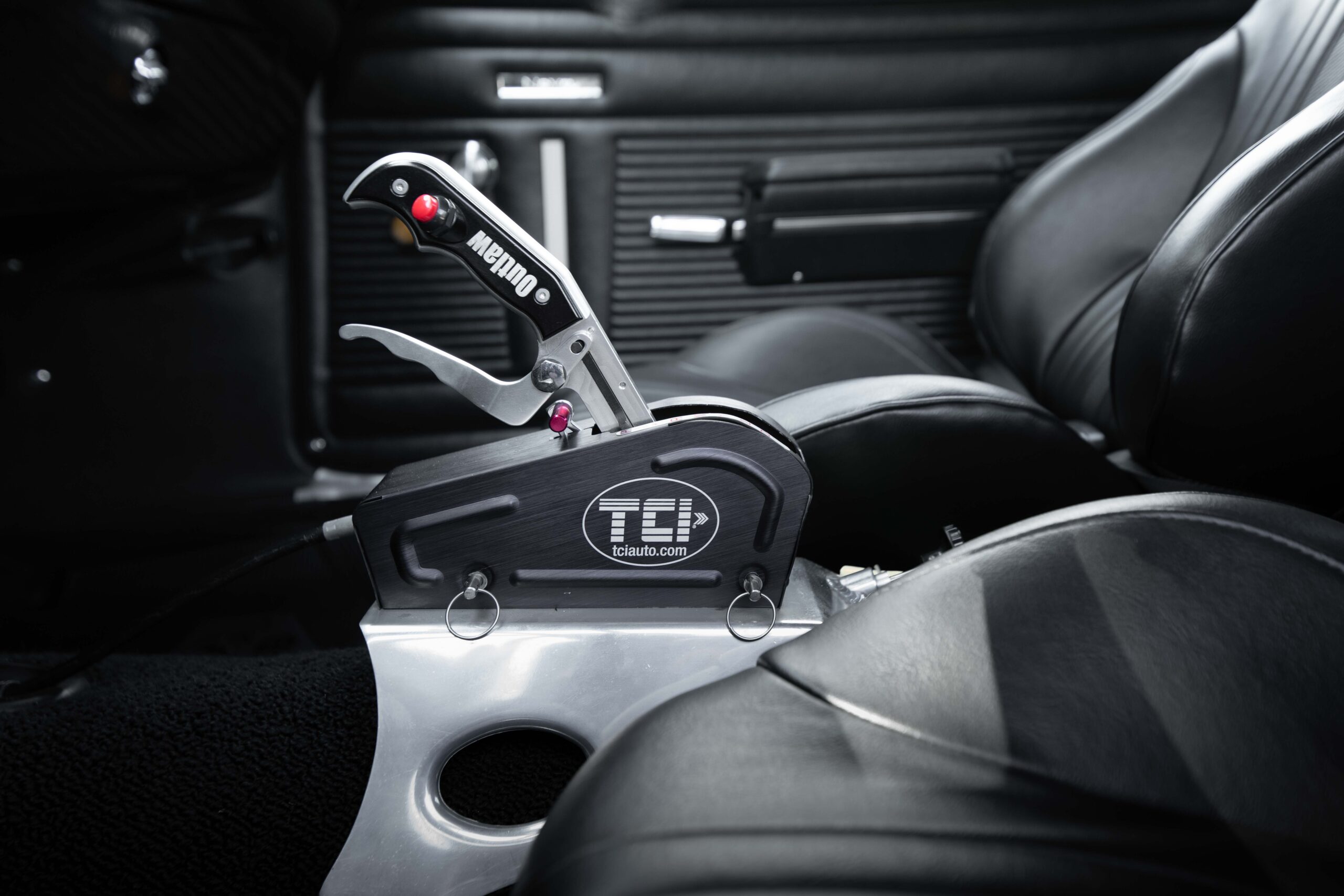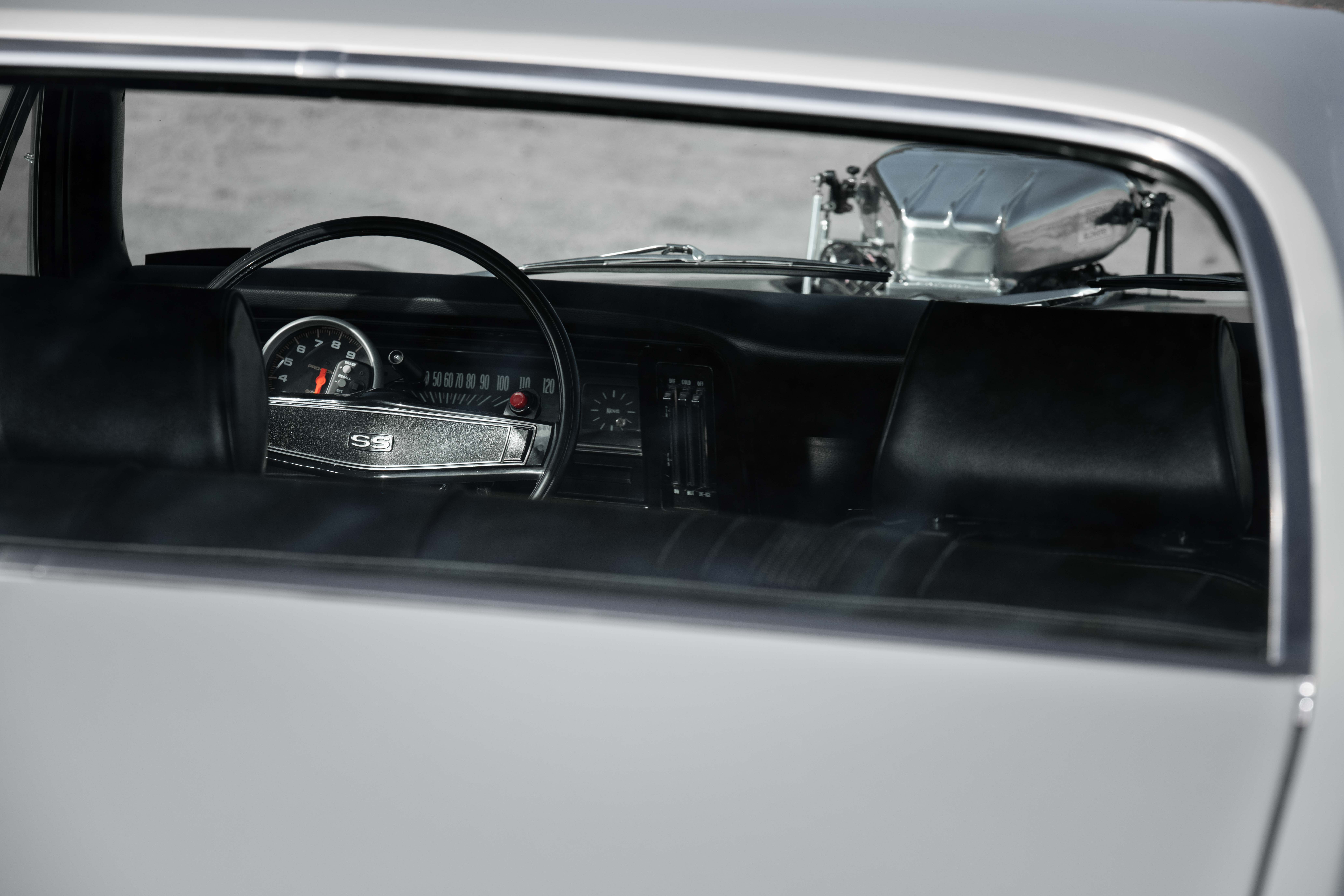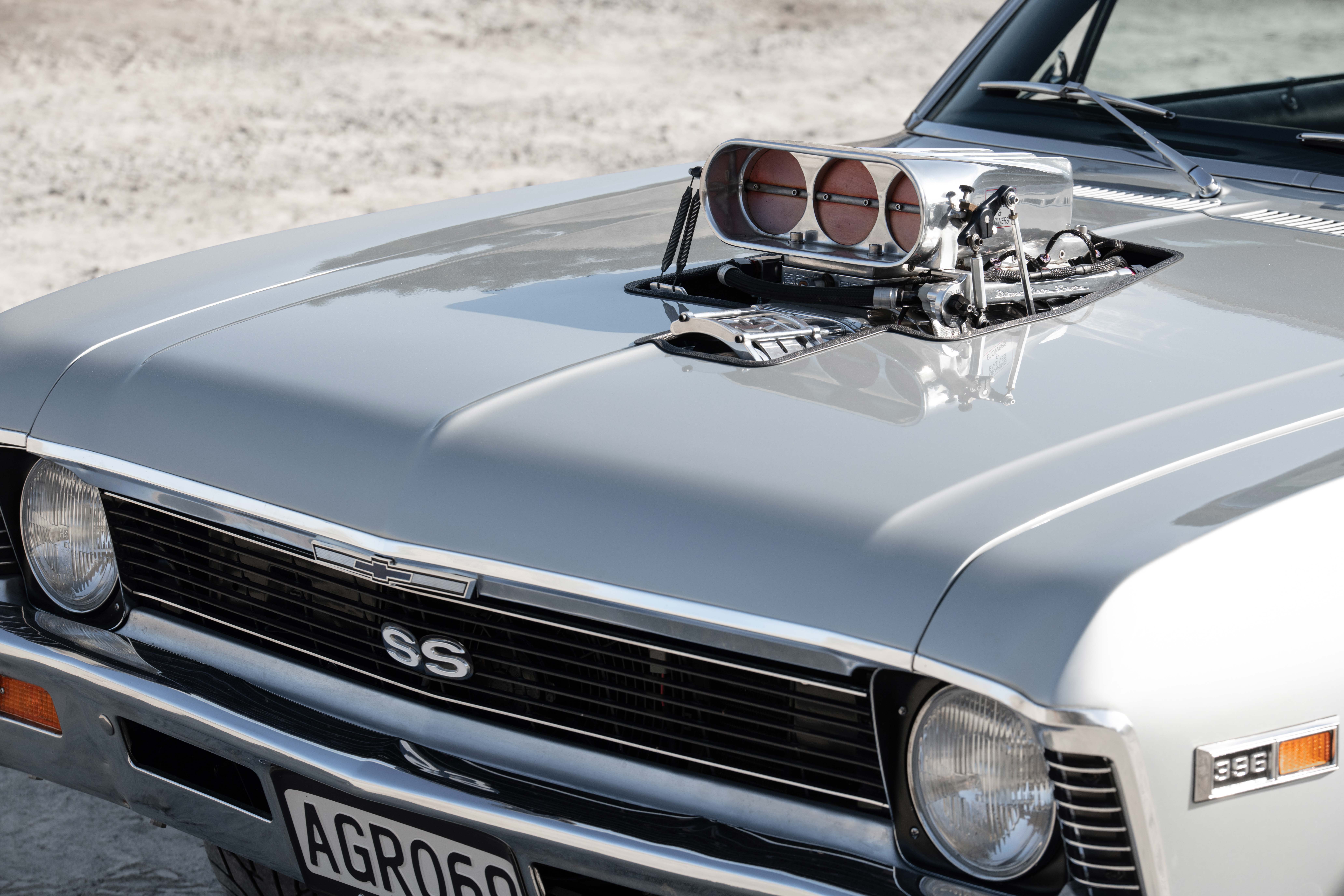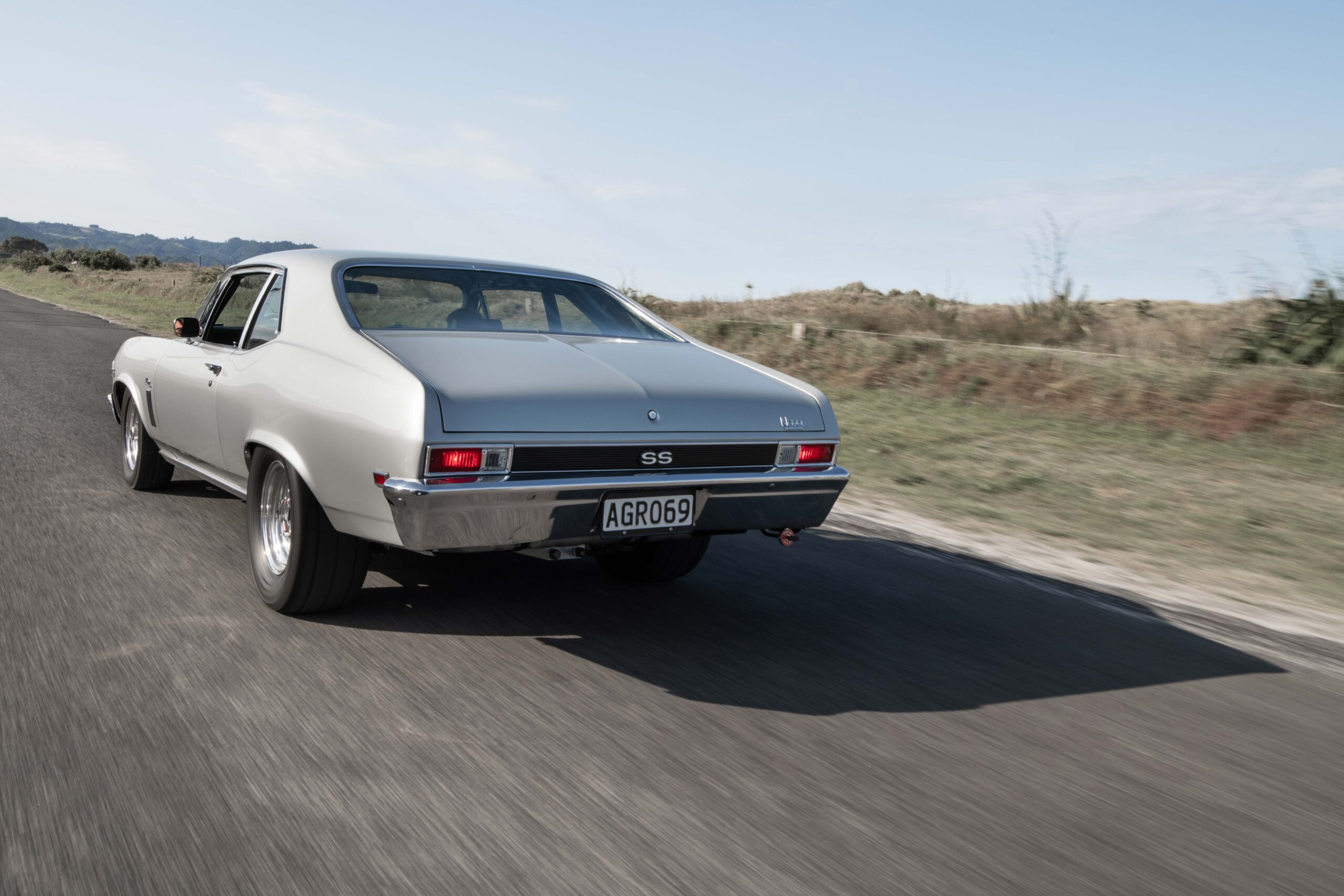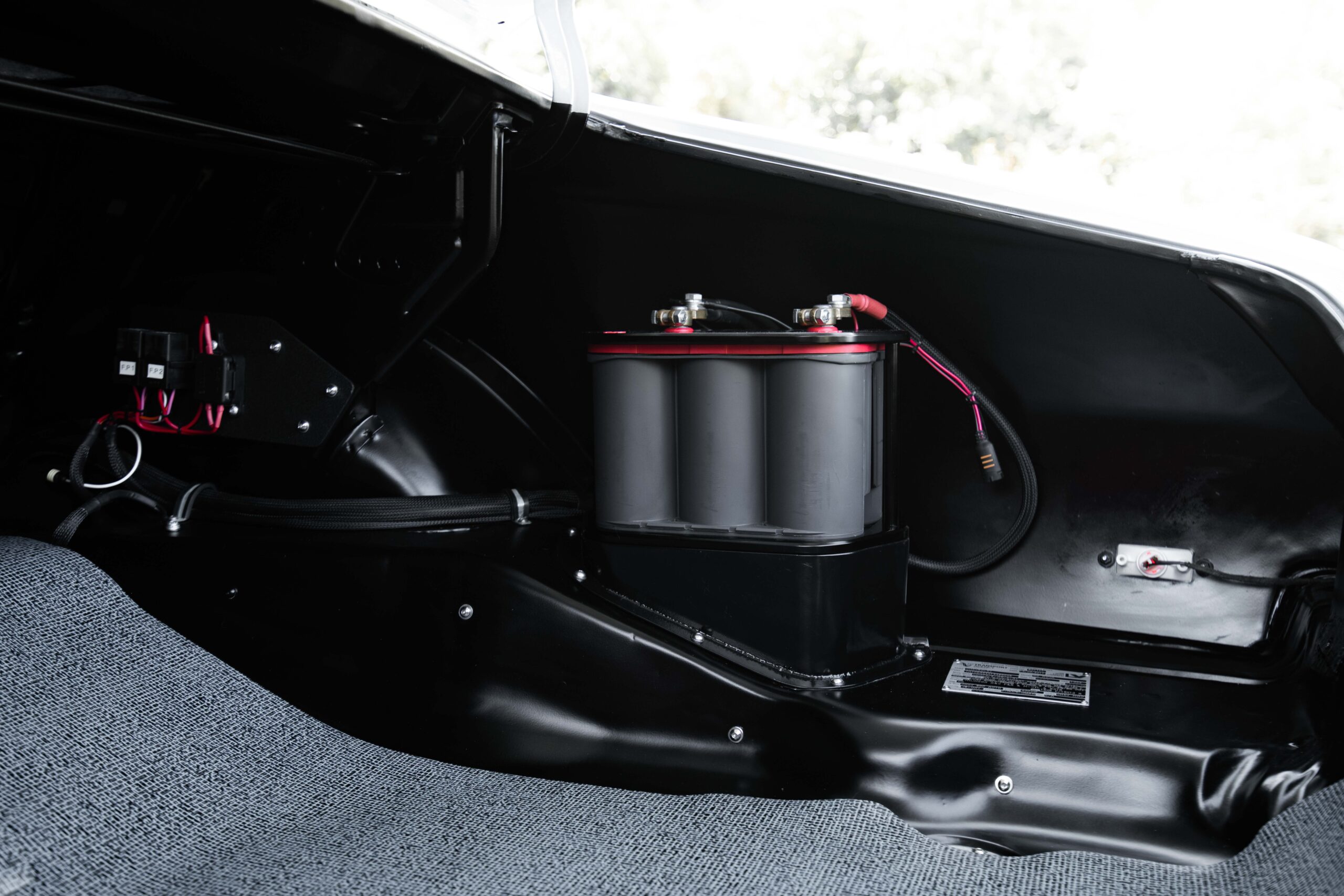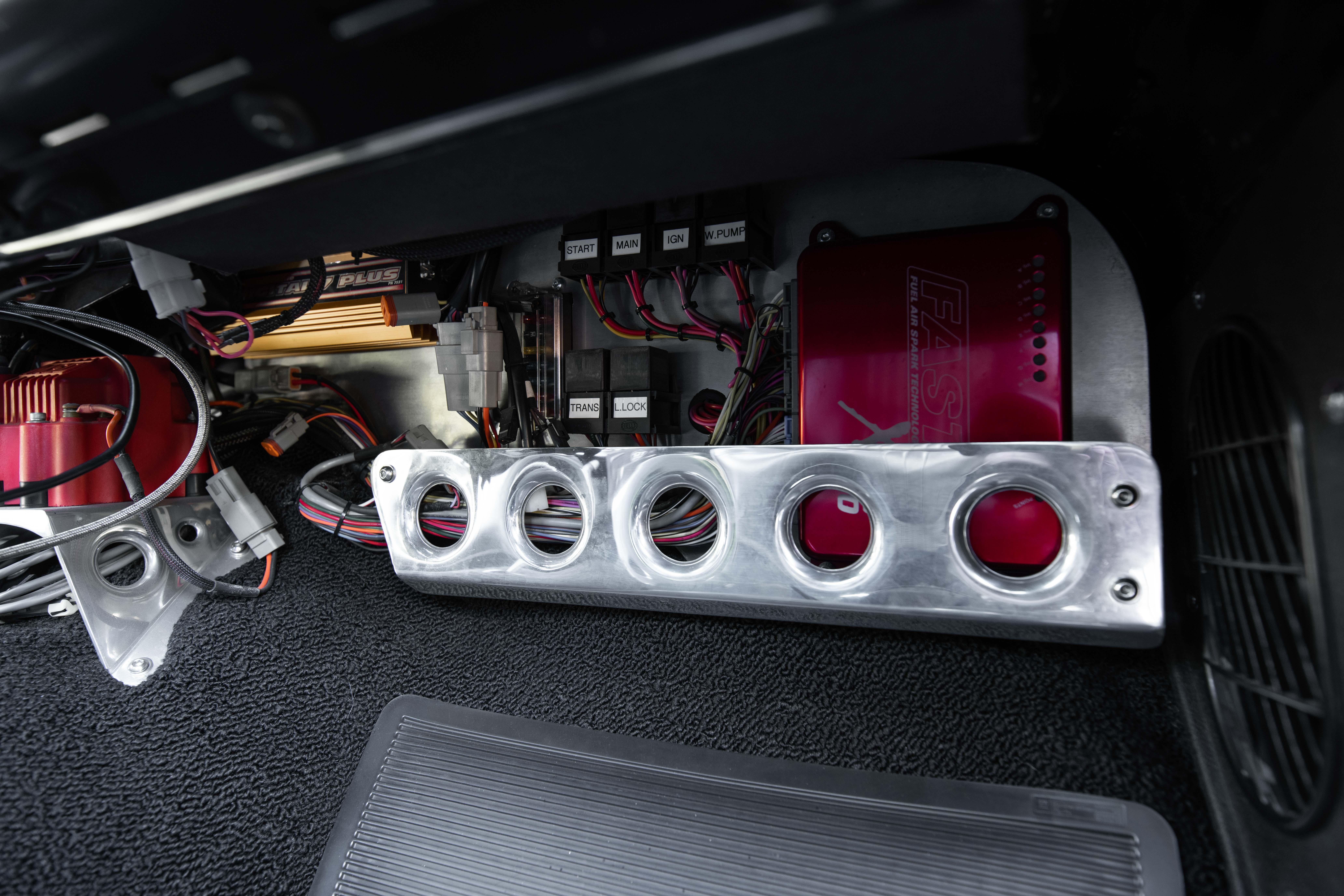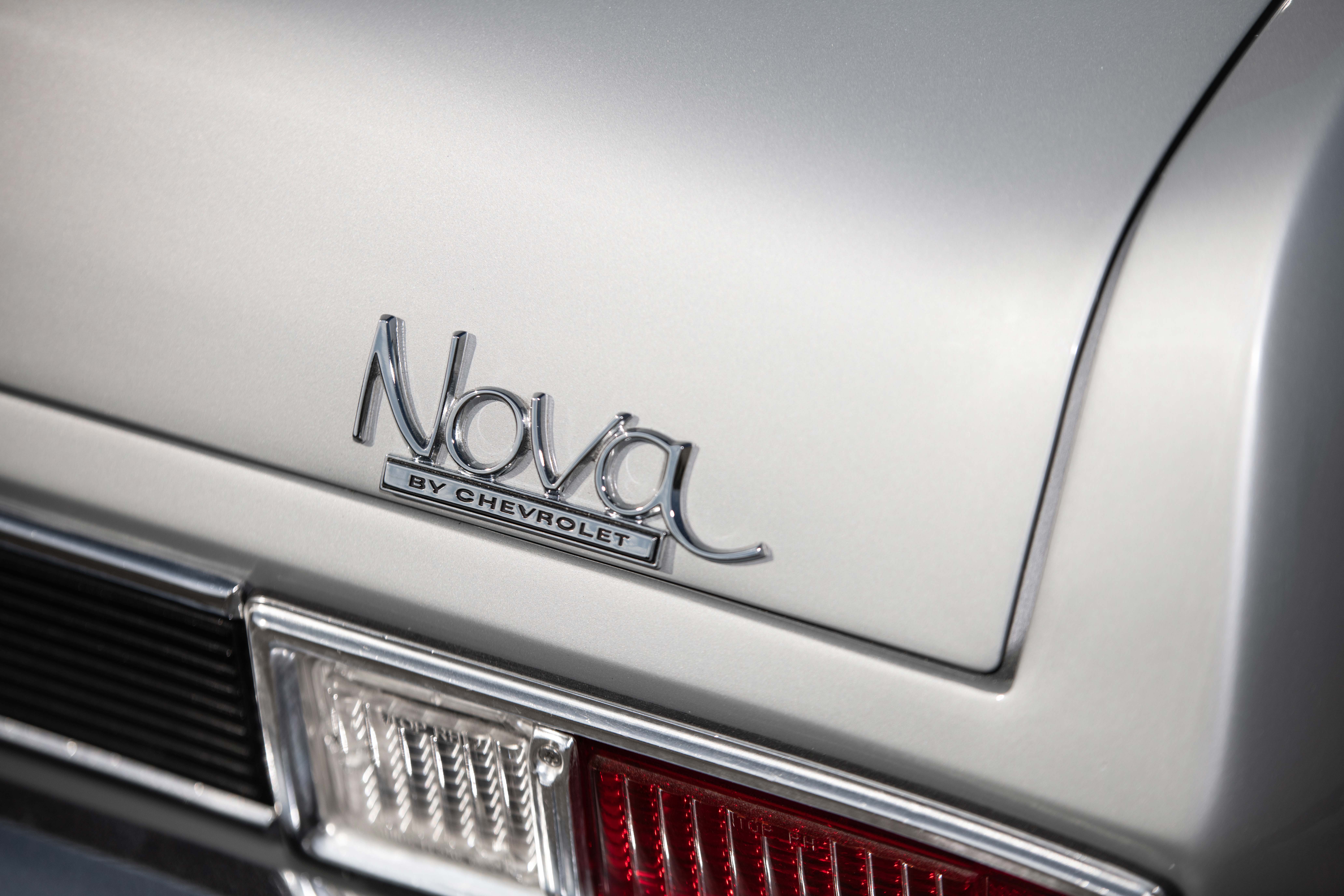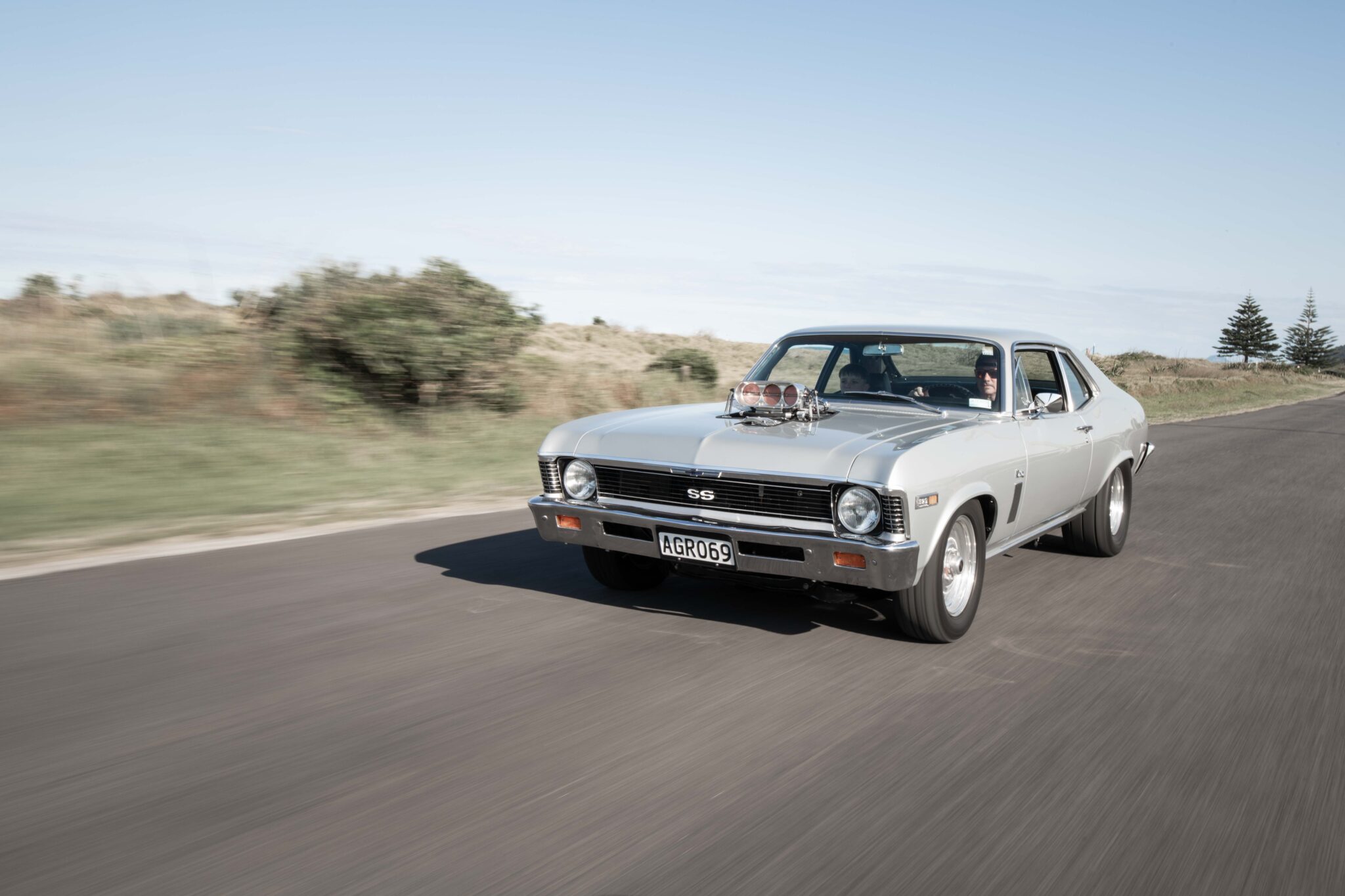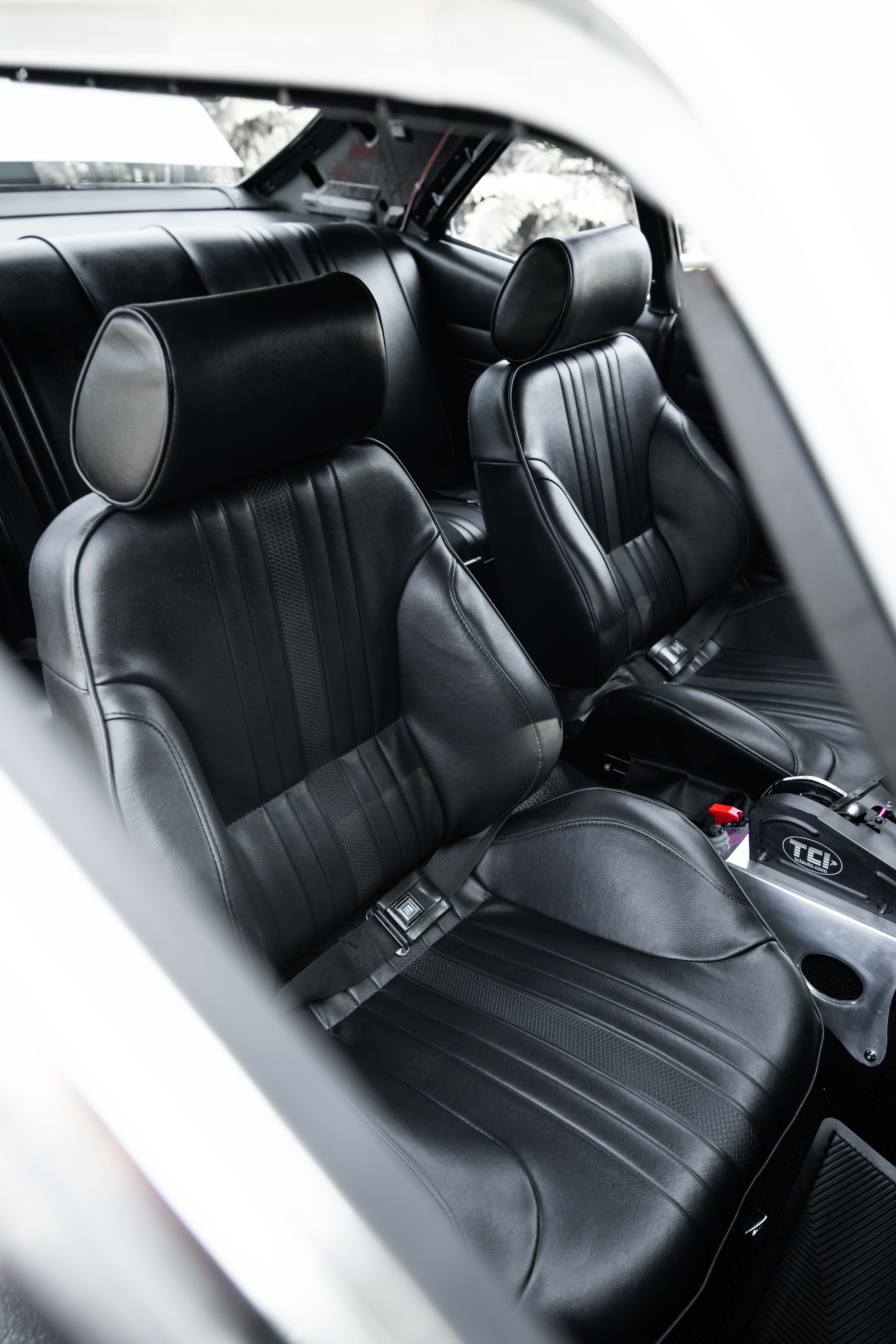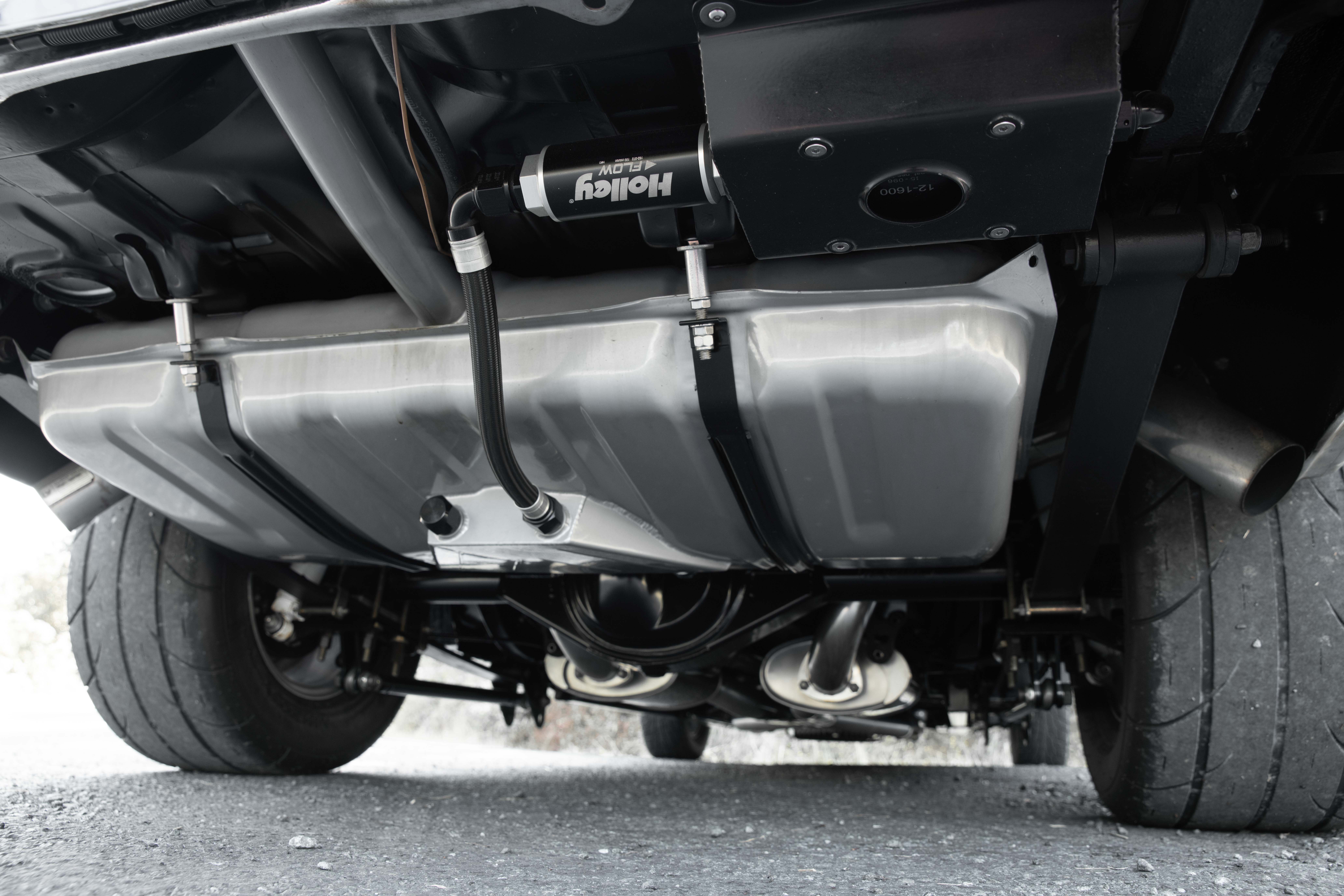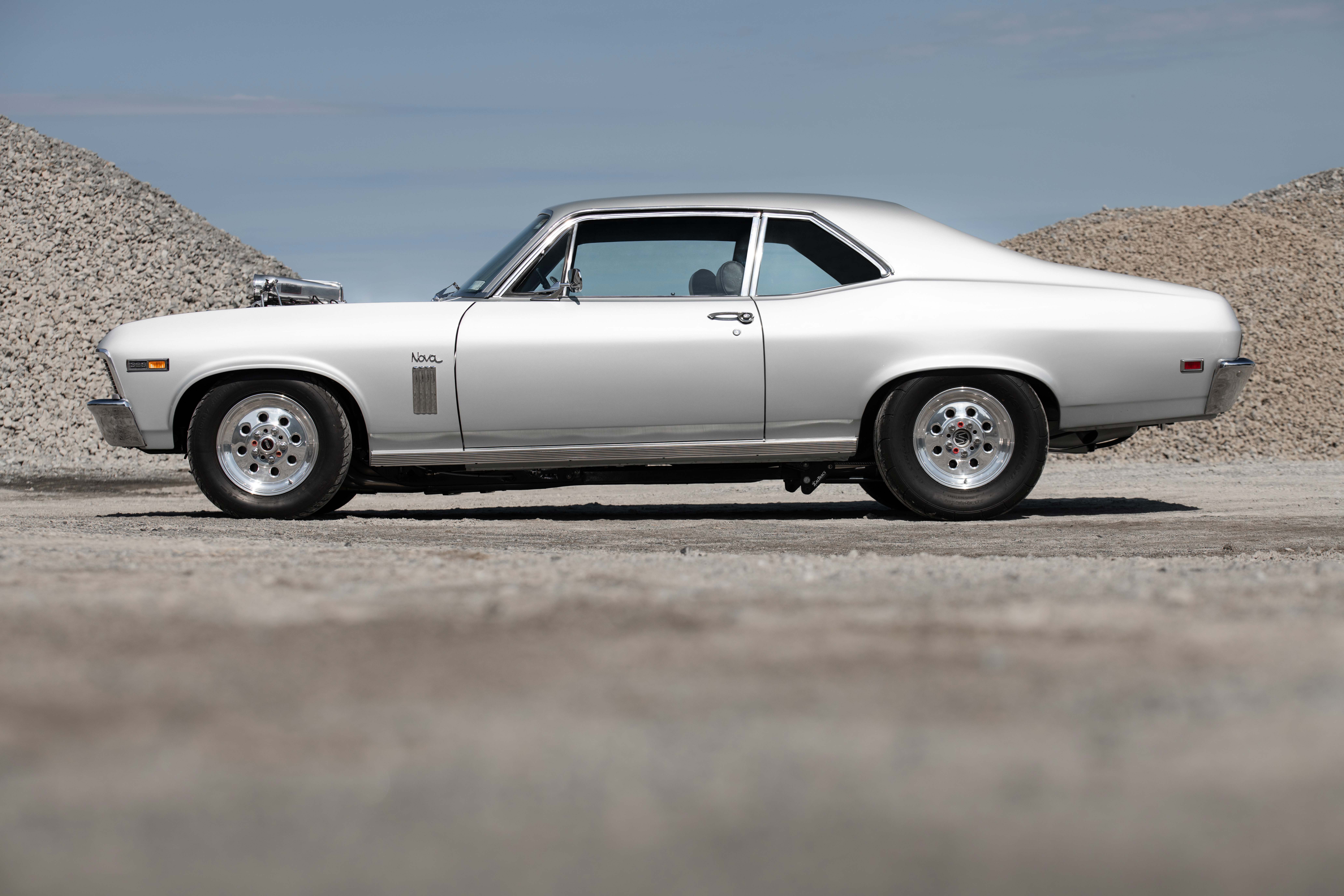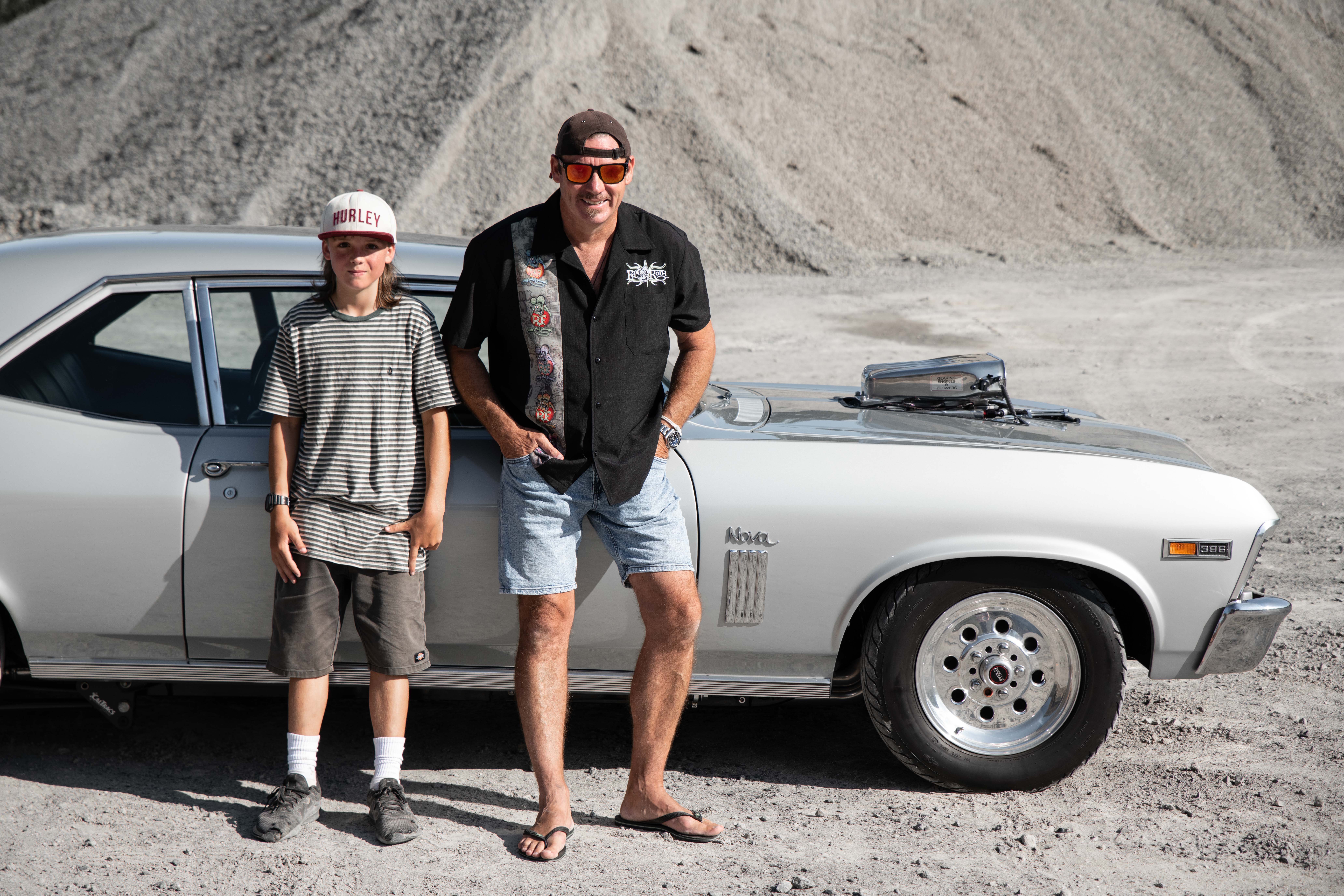Words: Todd Wylie Photos: Liam Dijk
Jamie Waugh is a man who knows his cars. He’s owned more than a few tough blown streeters in his time and a few Italian exotics too. While the vehicles are different in almost every way, they have one thing in common: horsepower and plenty of it. Of course, the power and driving experience they offer is delivered in vastly different ways, but Jamie loves them equally.
Having grown up around the Auckland car scene in the early 2000s, he knows all the right people to build impressive cars of his own. One of those contacts was legendary engine builder and drag racer Mike Gearing. Mike was the go-to guy for big horsepower right up till his retirement only a handful of years ago, when he sold the last of his tools to his protégé Reece Fish.
Having always wanted Mike to build a motor for him, Jamie hatched a plan to get in before Mike wound down. Sure, he had no car to put an engine into, but when you’ve got a limited opportunity to have a legend like Mike work on your stuff, you don’t let a minor issue like not having a car stop you.
“I wanted a motor that looked like it was based on an early ’60s FED [front-engine dragster] motor,” states Jamie. “Initially, I was thinking of having Rods by Reid build a ’32 to put it in, but with two kids, that wasn’t going to work, and, of course, it would be too wild in a car that light.”
So, with the car Mike’s engine would go into still unknown, Jamie pressed on to have his dream engine built.
While it would have been easy to opt for a big block, huge capacity was never the goal, but keeping weight down and building something that could rev highly and create plenty of power for the street was. With that in mind, Jamie ordered a Dart Little M block to base the build on. JE pistons, H-beam rods, a forged steel crank, and ARP fasteners were fitted — the engine displaces 400ci. While the capacity could have been stretched further, Mike said that wouldn’t be necessary. His reassuring words were, “it’ll be stout at 400”.
With decades of high-performance experience, Mike knew all the tricks and the right parts to use for the top end. The key components were Edelbrock Victor Jr 23-degree heads, which were heavily ported and fitted with roller lifters pushed up by a custom-spec Comp Cams camshaft.
While some of the engine specs are proprietary to Mike and Jamie, what they’ve done with the induction is in plain view. There was more than just old-school appeal behind the decision to fit an Enderle Nostalgia injection hat, because it allowed the intake set-up to sit much lower than a carb would have. The valuable space this saves was critical to keep the engine package under the required height when it eventually made its way through LVV certification. Cleverly, the hat was converted from mechanical injection to EFI using BDS fuel rails, which feed in pump gas above the BDS AirLock Stage 2, 6-71 supercharger. With all its polished components and the attention to detail that makes the engine look so right, it wouldn’t have mattered if the engine sat around on display for years before Jamie found a car to drop it into.
That didn’t end up happening though. While the engine was being built, Jamie immediately began the hunt for the right body. He’ll be the first to admit that he’s picky. It had to be the right car to meet his vision and high expectations. Wanting something mid-size, a first-generation Camaro was the obvious choice. However, when a genuine 1969 Nova SS 396 came up for sale wearing just 5400 recorded miles, well, he knew he had to have it. The car hadn’t been purchased by a collector and stuck in a museum; it had been bought by a racer off the showroom floor, and those 5000 miles had mainly been on dragstrips around California. So the numbers-matching 396 big block was gone, but the car came complete with a 498-cube set-up that had reportedly pushed the Nova to 10.4-second passes at the Sacramento Raceway. However, what really got Jamie’s attention was the state of the body. Sure, it was sunburnt, but it was utterly rust-free, uncut, unrepaired — a dream find. The fact that it weighed 660 pounds lighter than a similar-age Camaro was a bonus.
Before long, the big block was sold off and work begun to prep the body for the shiny new — more powerful — small block combo. Drag racing legend Terry ‘Chassisman’ Bowden was enlisted to help with this part of the process, and, while there wasn’t much chassis work required, his workmanship is very evident under the car.
The design philosophy was to build a car that vaguely looked like it had been built in ’69 using only bolt-on parts, which meant no shell cutting. Sure, this would restrict what size wheels and tyres the car could run, but with Terry’s knowledge, that didn’t necessarily mean a lack of traction.
Thanks to the competitive world of leaf-spring drag racing, off-the-shelf CalTracs split mono-leaf springs could be purchased as a bolt-in item. These springs, combined with CalTracs bars and eight-way adjustable shocks, give the car a trick suspension set-up without requiring extensive fabrication. The front end was upgraded with matching shocks, CalTracs coilovers, and replacement bushes.
No new parts were bolted on until the entire underside of the car was painted. Although not working as a car painter these days, Jamie is a painter by trade, so he took care of this himself, taking the underside back to bare metal on a rotisserie and going as far as finding the factory-correct shade of black to apply.
Once Jamie was happy with the factory-finish appearance, the drivetrain was fitted for the first time. The engine needed to be dropped down a few inches from stock, so Terry again helped, fitting the motor in nice and low. The team from C&M Performance were also heavily involved with the build fabrication, creating custom headers and exhaust systems, among many other fab jobs.
The transmission was straightforward enough — Jamie went straight to the top and purchased a brand-new Rossler TH400 filled with a reverse-pattern manual valve body and a Pro Torque 3200rpm billet converter. The rear end was built equally as tough by Tim and the crew at Krysler Shop to measurements supplied by Terry. Based on a custom housing, the diff runs a Strange nine-inch head with S-trac LSD, Strange 35-spline axles, and a large bearing housing.
With components like this, it’s obvious that Jamie likes to do things right, regardless of how much time, effort, or money is required. So, naturally, the braking system follows this ethos, with Wilwood components used throughout.
Getting the interior up to Jamie’s desired spec took time and perseverance. It was a factory bench-seat car, but he wanted buckets fitted. That is easy enough to achieve, but Jamie wanted to use factory-like vinyl material on the new seats. Trying to find the factory-correct vinyl from 1969 wasn’t easy, and although he did find some, he then had to convince the supplier to sell it to him — it only wanted to sell completed seats. Jamie persisted, and, eventually, the fabric arrived so that his Procar seats could be retrimmed. While the stock steering wheel was retained, the rest of the interior isn’t exactly factory, with a bunch of Auto Meter gauges and a TCI shifter taking pride of place, complete with a line-lock button. Jamie also took the precaution of installing a built-in fire-suppression system.
The team at C&M had the car running by this time, with all the fabrication and mechanical work absolutely flawless, but the car’s bodywork remained in its original sunburnt state. With it looking so original, Jamie was torn between leaving it that way or biting the bullet and bringing the exterior up to the same level as the rest. Eventually, he succumbed to peer pressure and accepted the new-paint challenge. He stripped it back to bare metal like the underside and repainted it himself. The result? You’d never guess that the car was painted by Jamie in his garage, rather than by a high-end painter with professional booth facilities — the finish he’s achieved is that good.
The whole project of getting the car, undertaking the work, and getting it on the road took five long years, not including the time spent building the motor. It’s been a long journey, but, thanks to his attention to detail and desire to get things right at all costs, it’s been a very rewarding experience.
The car drives fantastically, and with C&M-sorted tuning, there’s no shortage of power. That said, there’s still the option to switch it from pump gas to E85 for even more power, should it be needed.
Jamie’s achieved everything he set out to do, but there’s a lingering question, will he run the Nova down the quarter-mile? He’d be bold to risk damaging it when it looks as good as this. However, he’s not ruling it out — after all, that was part of the original plan.
Either way, whether Jamie decides to race it or not, this is one Nova that’s tough to beat.
_______________________________________________________________________________________________________
This article originally appeared in NZV8 issue 216





